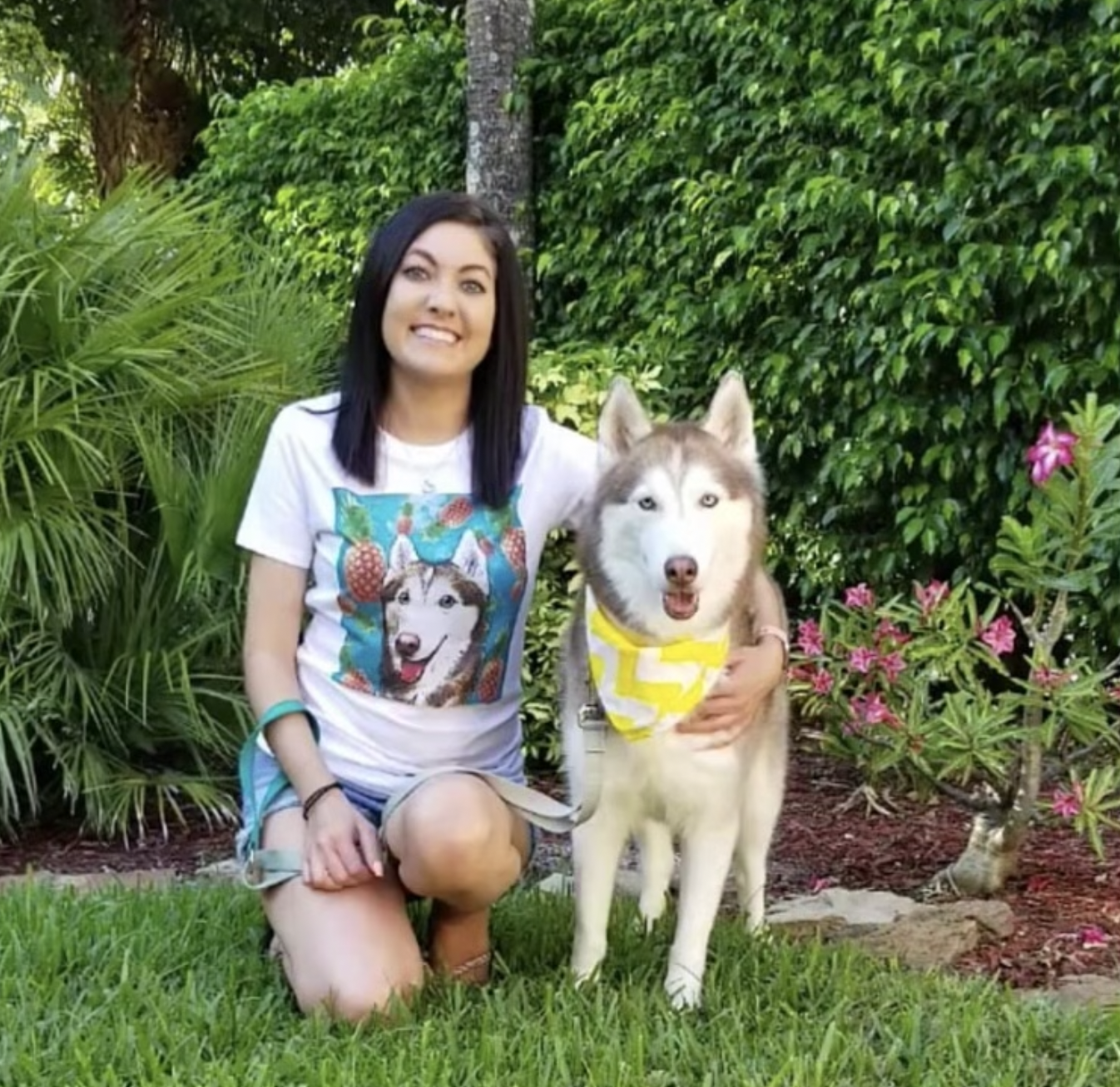A more accurate title would probably be, “How To Brush The Teeth Of A Dog Who Acts Like You’re Trying To Murder Them With A Toothbrush For The Sole Purpose Of Stealing Their Treasured Teeth Goobers,” But I was told that’s a bit wordy.
We’ve got all the tips and tricks for not only cleaning your dog’s teeth in the most effective way possible, but how to do it without them hating you!
Helpful Things To Keep In Mind Before You Start Brushin’
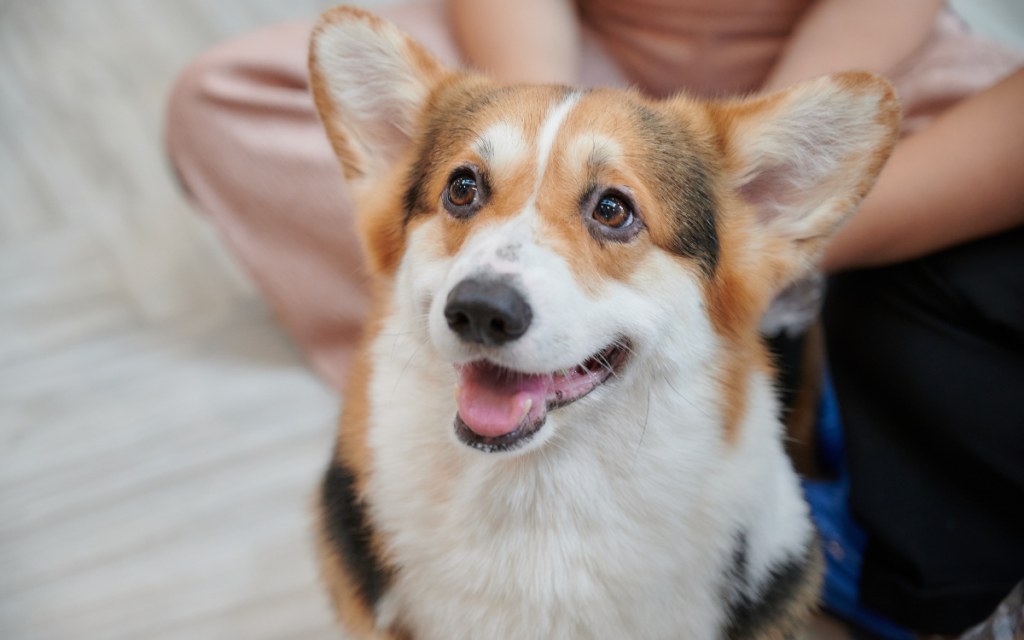

Toothbrushing is for Preventative Care Only – At-home toothbrushing helps to prevent the formation of calculus (the hard grey/brown stuff on their teeth), significant gingivitis, and diseases of the teeth themselves. Once those things are present, however, brushing can’t get rid of them; only an anesthetized dental cleaning can.
Toothbrushing Can Be Scary For Dogs – They have no concept of germs and bad breath, so they have no idea why you’re suddenly coming at them with a stick covered in prickly things to shove in their mouth. Try to keep their viewpoint in mind if you get frustrated, and aim to make this process as fun as possible for them. It’ll make it easier on both of you!
Toothbrushing Can Be Painful And Inappropriate For Some Dogs – Studies have shown that over 80% of dogs over the age of 3 have periodontal disease1. This can make toothbrushing painful, especially if you’re starting at a later stage in your pup’s life. Plus, in addition to being painful, brushing a mouth with periodontal disease just isn’t effective. These dogs need professional veterinary dental cleaning before you start brushing their teeth at home. It’s always a great idea to check in with your vet before starting an at-home brushing routine, to make sure your pup’s chompers are good to go. If your dog is acting like brushing is painful, stop and get their teeth looked at before continuing.
Toothbrushing Should Always Be Gentle – You should never apply hard pressure when brushing your dog’s teeth. You are trying to remove the soft, white plaque that accumulates during the day (just like on our teeth), so you may not see an obvious difference before and after brushing… but trust us, you are making a difference! Brushing does not remove the brown/grey stuff on their teeth – this is mineralized plaque, called “calculus,” and it is cemented onto the teeth. It will always win against a toothbrush and brushing harder will only hurt your dog.
Don’t Be Afraid To Try Different Techniques Or Tools – Maybe your dog can handle a finger brush, but wants nothing to do with the fancy toothbrush you bought. Maybe they just hate the flavor of toothpaste you picked. Heck, they might only cooperate enough to let you get the upper left part of their mouth brushed today, but then they’ll let you do another section tomorrow. You’re already one step ahead of most pet parents by just committing to brushing their teeth, so don’t be afraid to try different things until you find what works best for you and your dog.
Related Article: 5 Ways Dental Disease Affects Your Dog’s Health
Supplies You’ll Need to Brush Your Dog’s Teeth
- Your patience
- A toothbrush (options listed below)
- Dog-friendly toothpaste (Human toothpaste is an absolute no-no! They can have ingredients in them that are toxic to dogs, such as xylitol or fluoride.)
- Your pup’s favorite treats
Which Dog Toothbrush Should You Use?
The real correct answer to this is: whichever toothbrush or tool works best for your dog! That being said, let’s take a look at some of your more effective options.
Most Ideal Dog Toothbrush Options:






- Angled Dog Toothbrush – Keep in mind that dog’s mouths are shaped differently than ours. Angled toothbrushes like this one from Vetoquinol help you reach the back and sides of your dog’s teeth more easily. In a 2021 research study, these brushes with a backward tilting angle at the neck were found to perform better than straight toothbrushes for brushing dog’s teeth2.
- ADA Approved Soft-Bristle, Flat Head, Adult Or Child Human Toothbrush – Yup, you can use a regular soft-bristle human toothbrush to brush your dog’s teeth, but keep in mind that an adult-sized toothbrush may be too large for small breed dogs. Human toothbrushes may be slightly more difficult than an angled toothbrush to reach all the nooks and crannies of your pup’s mouth, but they’ll get the job done.
- Gauze or Cloth – This is a lesser known secret of the dog-toothbrushing world. Gauze—like the kind you have in your first aid kit—is actually more abrasive than most finger brushes (seen below), but still gives you the benefit of being less invasive than a toothbrush for more finicky dogs. However, it’s not the best choice to get in between tooth crevices.
Less Ideal Dog Toothbrush Options:






- Finger Toothbrush – A finger toothbrush slips over your finger and has either little silicone bristles surrounding it, or regular toothbrush bristles on one side that act like a toothbrush to help brush away debris. Although these might look more hassle-free, they don’t clean as well as regular brushes. They can also be a choking hazard if your dog decides to swipe it off your finger in hopes of it being a finger-snack delicacy.
- Your Bare Finger – Ok, if you’re in a real pinch, you could resort to using your finger. However, fingers aren’t great at removing plaque relative to the other options. Not to mention, if your dog gets upset, it’s your finger that’s on the chomping—er, chopping—block. You’d get much better and safer results by spreading the toothpaste on a doggy dental chew and delivering it that way.
- Electric Dog Toothbrush – Yes, they do actually make these, but good luck not scaring the crap out of your dog with one. These are more for seasoned pup pros.
Related Article: Best Toothbrushes for Dogs
Which Dog Toothpaste Should You Use?
First, it’s important to note that you should NEVER use human toothpaste for brushing your dog’s teeth. This is because human toothpaste often contains ingredients that are toxic to dogs, such as xylitol or fluoride. Here’s what you should look for in a great dog toothpaste:
- Choose A Flavor Your Dog Likes – Dog toothpaste comes in bunches of different flavors—everything from chicken to peanut butter, and vanilla mint to vanilla ginger. Choosing one that is more of a treat to your dog is going to make things a whole lot easier for both of you.
- Look For A Dog Toothpaste With Enzymes – Dog-friendly toothpaste with active enzymes, like Bark Bright’s triple enzymatic toothpaste, is going to help fight calculus and bad bacterial activity in your dog’s mouth. Enzymatic toothpastes are effectively the Robin to your toothbrush’s Batman.
Related Article: Best Dog-Safe Toothpastes of 2022
Step-By-Step Guide To Brushing Your Dog’s Teeth:
Step 1: Put Your Patience Pants On


Seriously though! Keep in mind that this experience can be stressful or painful for your pup. It’s going to take patience on your part. Don’t chase them around the house with a toothbrush. Take things slow. Reassure them if they seem stressed. Be gentle and take breaks if your dog needs it. But most of all, try to make this experience as fun as possible for them so they see it as a treat, rather than torture.
Step 2: Let Your Dog See, Smell, And Taste The Toothbrushing Supplies
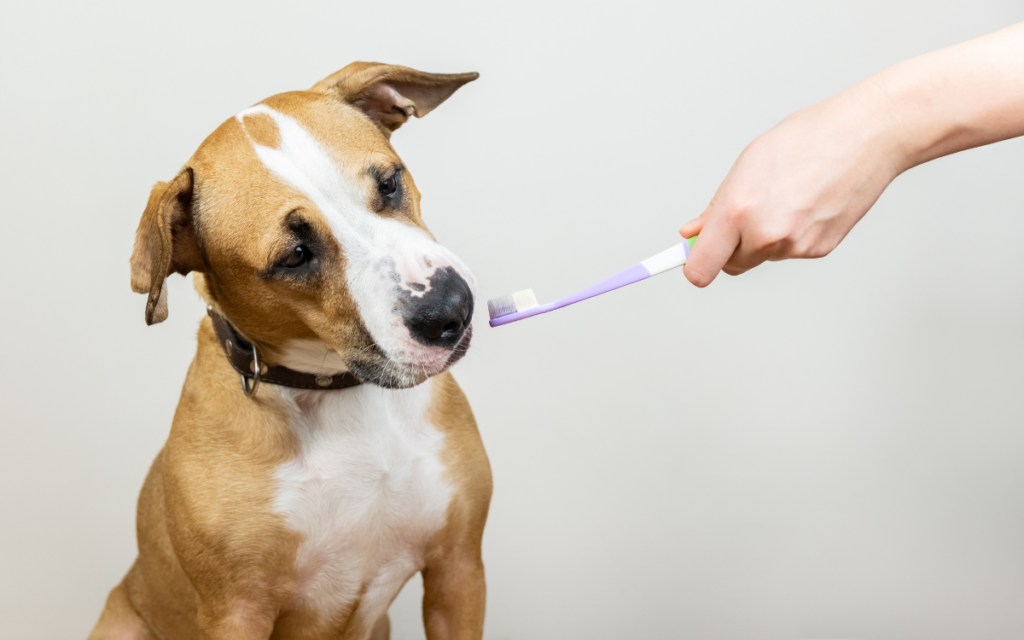

Start by letting your pup see and smell the toothbrush while it’s resting in your hand. Don’t brush yet! Let them smell and taste the toothpaste from your finger (only about a pea-sized drop) as a treat before you start. You will be helping to reassure them about this weird brushing tradition by making sure they like the toothpaste flavor and by letting them see that the things in your hand aren’t scary. You don’t want to sneak attack your dog and start shoving a toothbrush in their mouth when they have no idea what you’re doing, or why you’re doing it.
Pro Tip: If your dog is resistant to the toothpaste alone, try another flavor. You can even try using gravy or a gravy-type dog food topper just to get them used to the process and switch to toothpaste when they’re more comfortable.
Step 3: Put Toothpaste On Your Brush And Let Your Dog Lick It (Without Brushing Action)
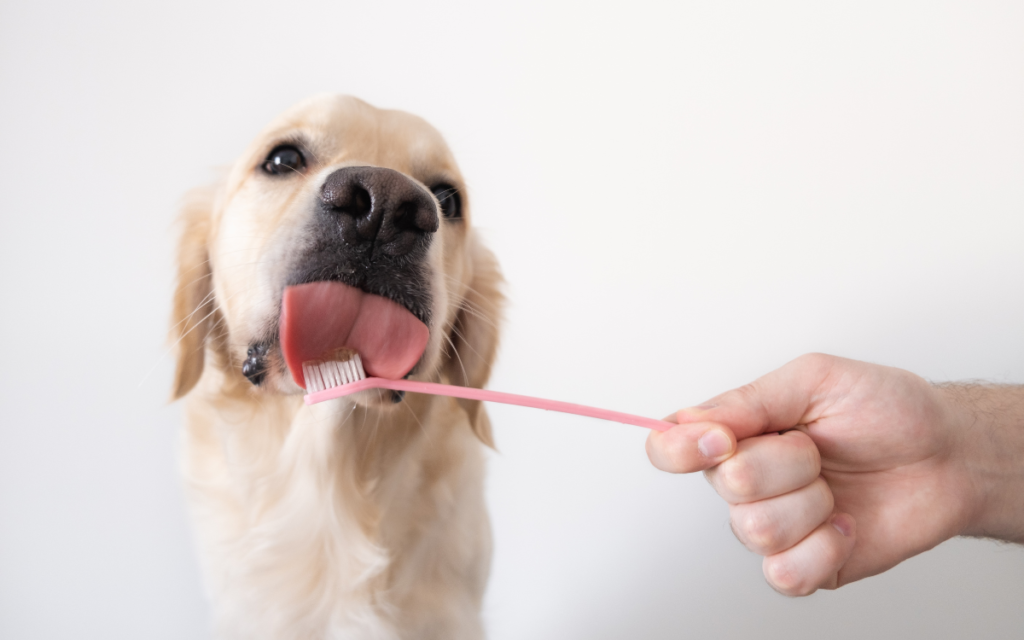

*First, if you’re using gauze, unfold the small square, wrap it around your pointer finger and hold the end in place with your thumb. If you’re using a finger brush, pop it on top of whichever finger (typically your pointer finger) that’s most comfortable to reach the far-back, mysterious part of your pup’s mouth.
Next, put another pea-sized amount of toothpaste (or gravy) on the toothbrush (or on the finger brush/gauze), instead of your finger this time, and again, let them lick it before any brushing takes place. Repeat this about 3 times until your dog begins to associate this as a treat. Take baby steps to show them that none of this is scary.
Step 4: Make The First Gentle And Brief Brushing Motion Under Your Pup’s Upper Lip
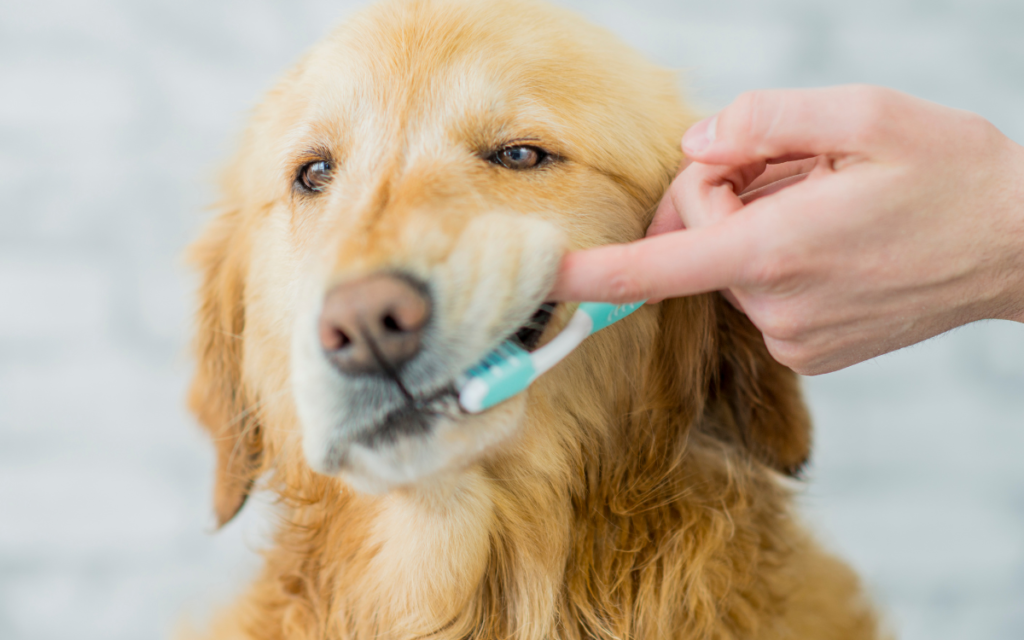

Whether you have a toothbrush, finger brush, or gauze, gently slide your finger or toothbrush up under their upper lip and make one soft brushing motion, then let them lick the rest of the toothpaste. Repeat this 3 times. If they back away from your hand or brush, try to avoid holding their head or chasing after their mouth with the brush. Repeat steps 1-5 until your dog feels comfortable approaching the brush before you move forward.
Step 5: Increase Gentle Brushing Of Top Teeth, Between Cheek And Tooth.
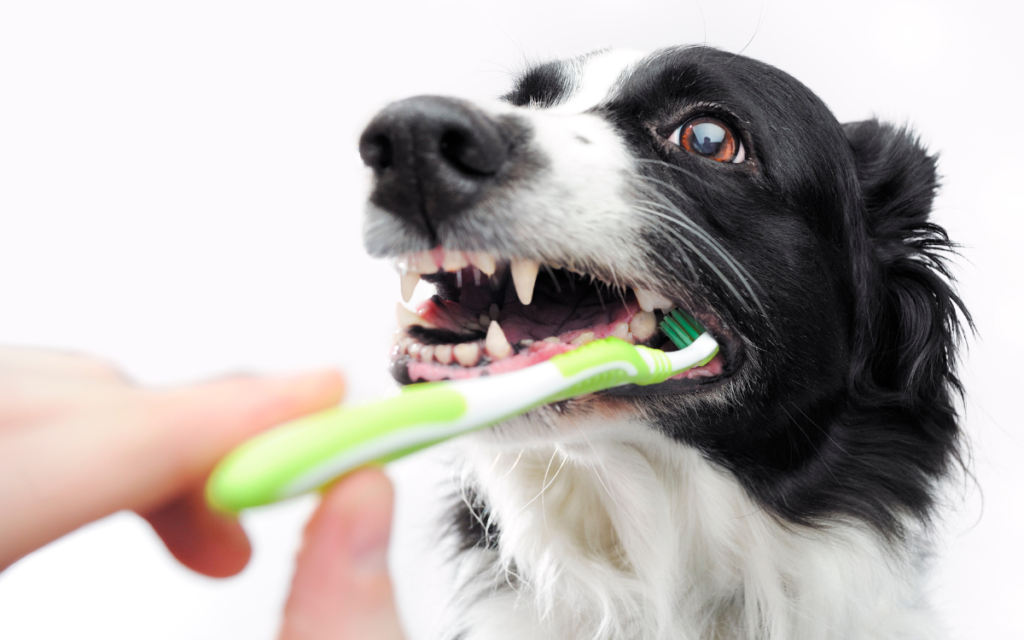

Once your pup is accepting of the steps above, slide your finger or toothbrush in between their cheek and teeth of the upper row of teeth (start on either the left or right side and work toward the opposite side), making a gentle brushing motion. You can either repeat a single, gentle swipe a few times until your dog is comfortable with this new action, or if they allow, you can slowly increase the gentle brushing action of the top teeth. Aim to brush each tooth at least 4 times. Finish by letting them lick the toothpaste.
Pro Tip: You may need to use your other hand to gently push their tongue or cheek out of the way. You can also use this hand to gently hold their chin steady, but do not force their head in place.
Bonus Pro Tip: If your dog loves ear scratches, this sometimes distracts them enough that they don’t even realize or care what you’re doing with the brush in the other hand.
Step 6: Gently Brush The Opposite Side Of Upper Teeth Toward Their Tongue.
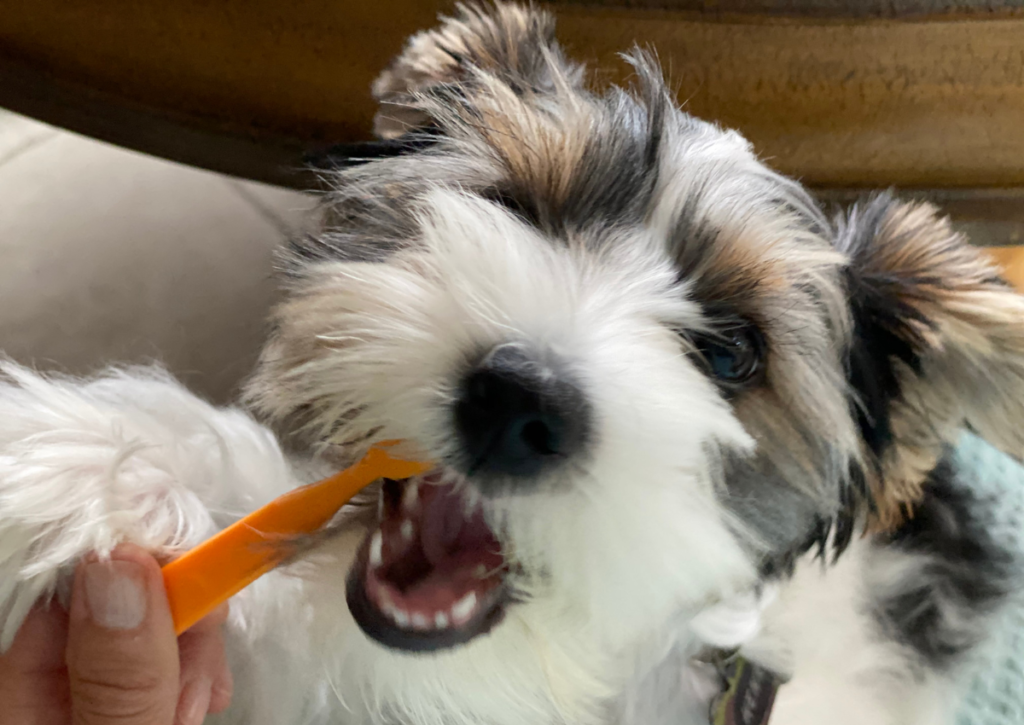

Repeat gentle brushing on the opposite side of your pup’s upper teeth—toward their tongue. Make sure to brush each tooth at least 4 times, to be most effective. Again, let them lick the remaining toothpaste.
This side of the teeth is less of a priority than the side of the teeth facing the cheeks. If you have to pick your battle, focus your energy on the “outside” (cheek-side) of the teeth.
Step 7: Repeat Gentle Brushing On Bottom Teeth.
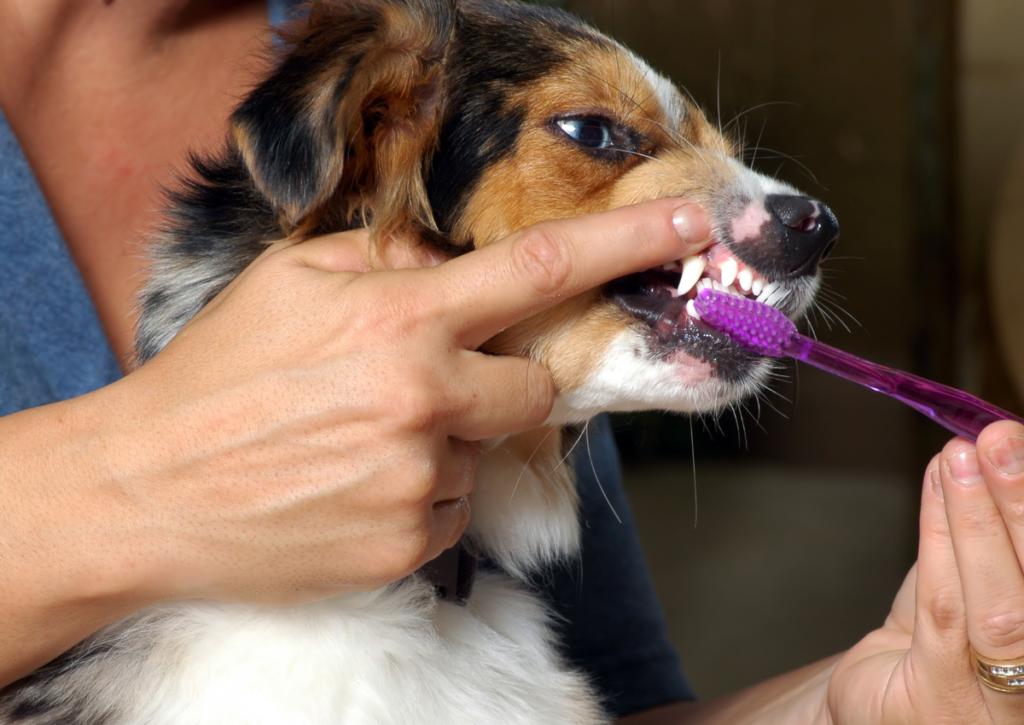

Repeat steps 1-6 on each side of your pup’s bottom row of teeth.
Step 8: Finally, Give Lots Of Praise And Tell Them They’re A Good Boy Or Girl
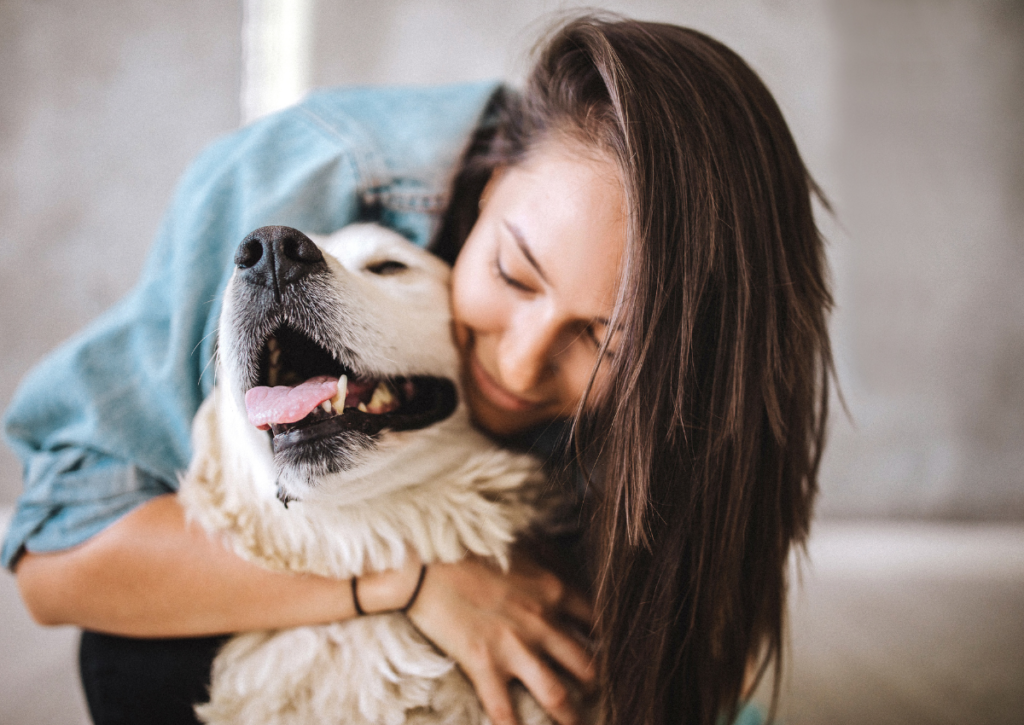

To finish up, give your pup lots of praise, some play time, or a high-valued treat. Make sure they know you’re proud of them, and assure them that toothbrushing goes hand-in-hand with some type of reward. Eventually, they’ll put up with the toothbrushing routine more easily, knowing they have a treat or playtime coming at the end.
Step 9: Create A Brushing Routine
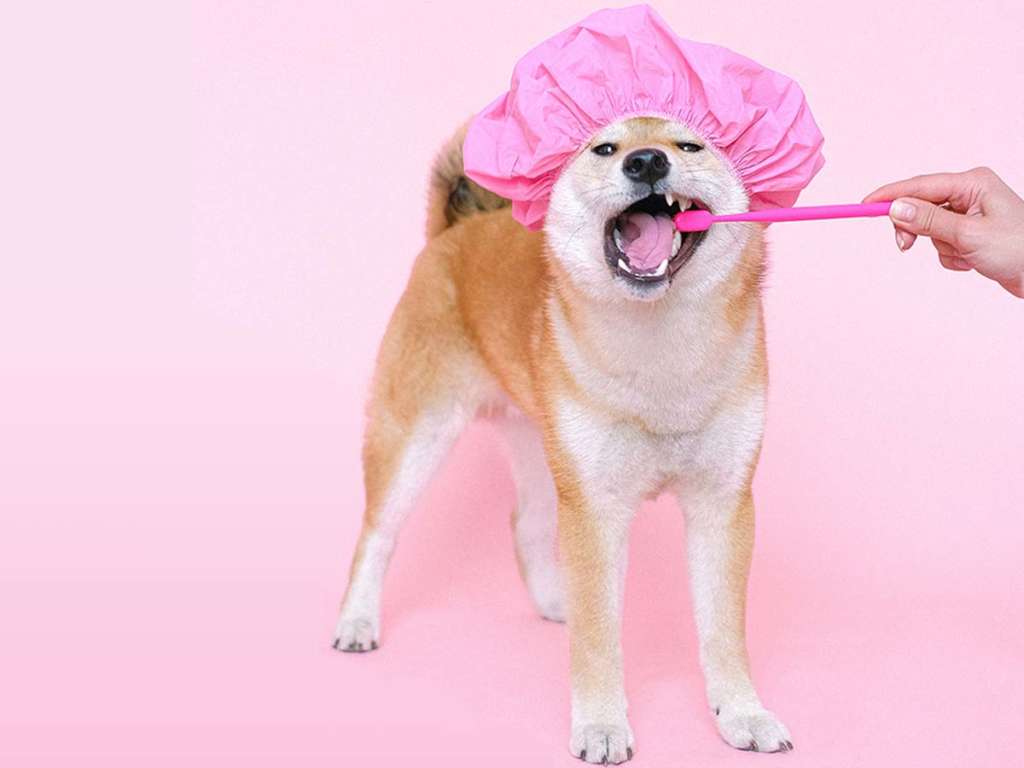

Congrats! You brushed your pup’s teeth like a tooth-brushin’ pro! Now, let’s do it again. Liiike…for the rest of their lives! Ideally, you should be brushing your dog’s teeth every day to see the most benefit. Studies have shown that dogs whose teeth are brushed daily have about 80% less calculus buildup than dogs who don’t have their teeth brushed at all; whereas, dogs whose teeth are brushed every other day only have about 37% less calculus buildup compared to dogs who don’t have their teeth brushed3.
Related Article: Do I Need To Brush My Dog’s Teeth Every Day?
Final Toothbrushing Life Pro Tip:
Maybe you tried and tried, but your dog is just fighting you with the strength of all The Avengers combined. We get it. Some pups just find the whole toothbrushing experience stressful, painful, and traumatizing.
And if that’s your pup’s case, this is exactly why the creators of BarkBox created Bark Bright Dental Chew Kits—a two part system with a yummy dental chew to take the place of the toothbrush’s scrubbing action, combined with a triple enzymatic toothpaste that helps break down leftover food particles and plaque. It’s a safe and effective way to start cleaning your dog’s teeth without fighting them tooth and nail! Plus, it’s a great way to slowly get them accustomed to teeth cleaning – after all, there’s no substitute for brushing!
Looking for a proactive approach to your dog’s dental health? BARK Bright pairs an enzymatic toothpaste with specially-shaped dental chews so your dog’s pearly whites stay in tip-top shape!


This article has been reviewed by Margo Hennet, DVM.
Margo Hennet, DVM, cVMA, and veterinarian at BARK is a canine nutrition, health, & wellness connoisseur. She has a combined 10 years of experience in clinical medicine, research, and education—that’s 70 dog years of know-how—and graduated from Colorado State University as a Doctor of Veterinary Medicine. She completed specialized training in internal medicine prior to working as a general practitioner in Colorado, has authored peer-reviewed publications and textbook chapters, holds certification in veterinary medical acupuncture, and is a member of the American Academy of Veterinary Nutrition and American Veterinary Medical Association.
Sources:
1 Enlund, Karolina Brunius, et al. “Dog Owners’ Perspectives on Canine Dental Health — A Questionnaire in Sweden.” Frontiers in Veterinary Science, Frontiers Media S.A., 9 June 2020, https://www.ncbi.nlm.nih.gov/pmc/articles/PMC7297050/.
2 Huang, Yu Shu, and Cheng Qi Xue. “Research on the Ergonomic Design of Pet Dog Toothbrush Neck.” E3S Web of Conferences, EDP Sciences, 21 June 2021, https://www.e3s-conferences.org/articles/e3sconf/abs/2021/51/e3sconf_eilcd2021_03038/e3sconf_eilcd2021_03038.html.
3 Hietakangas, Mirella. “Homecare in Prevention of Periodontal Disease in Dogs and Cats: Owner Awareness and Attitudes.” DSpace, Eesti Maaülikool, 31 May 2019, https://dspace.emu.ee/handle/10492/4911/.

